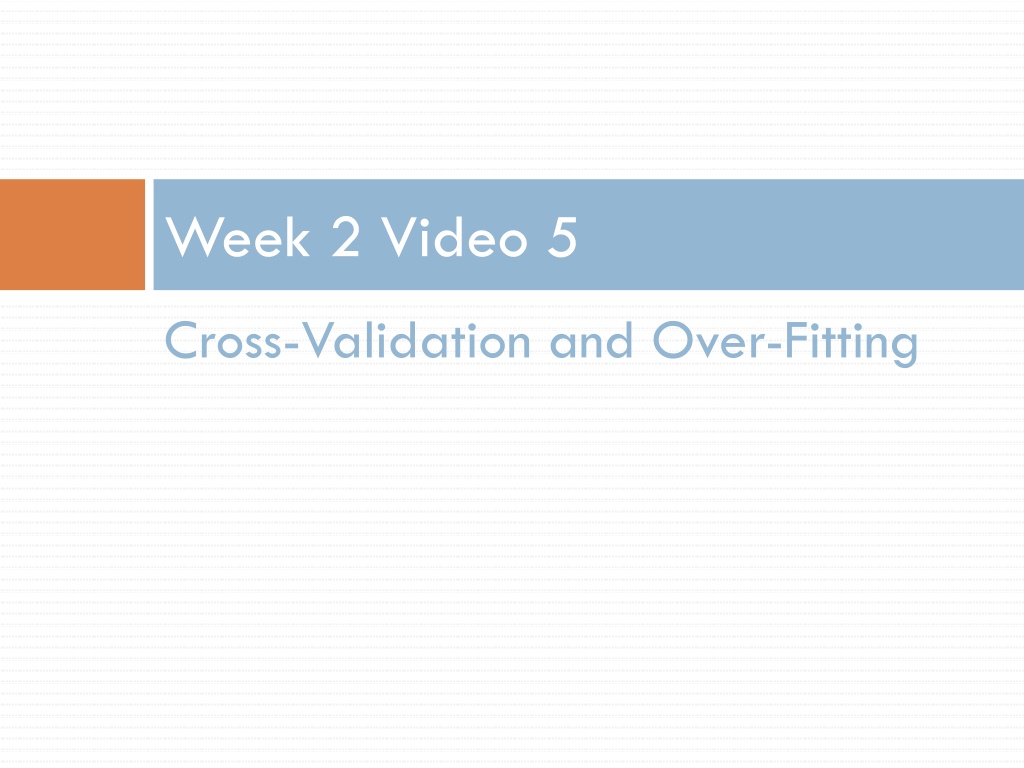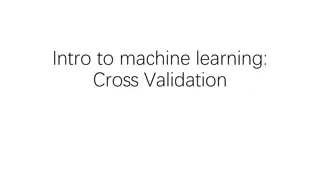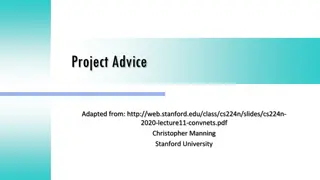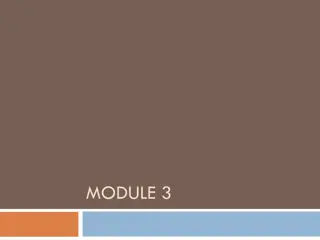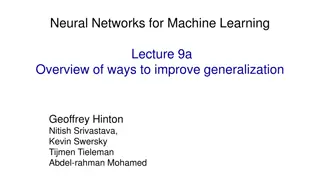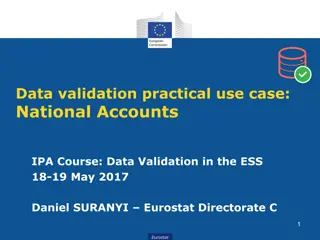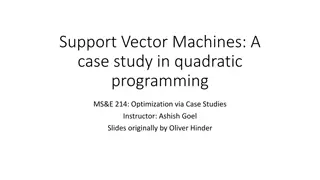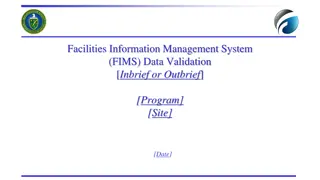Understanding Cross-Validation and Overfitting in Machine Learning
Overfitting is a common issue in machine learning where a model fits too closely to the training data, capturing noise instead of the underlying pattern. Cross-validation is a technique used to assess a model's generalizability by splitting data into subsets for training and testing. Strategies to reduce overfitting include using simpler models, evaluating generalizability, and conducting cross-validation to test model performance on unseen data.
Download Presentation

Please find below an Image/Link to download the presentation.
The content on the website is provided AS IS for your information and personal use only. It may not be sold, licensed, or shared on other websites without obtaining consent from the author. Download presentation by click this link. If you encounter any issues during the download, it is possible that the publisher has removed the file from their server.
E N D
Presentation Transcript
Week 2 Video 5 Cross-Validation and Over-Fitting
Over-Fitting I ve mentioned over-fitting a few times during the last few weeks Fitting to the noise as well as the signal
Over-Fitting 25 25 20 20 15 15 10 10 5 5 0 0 0 5 10 15 20 25 0 5 10 15 20 25 Good fit Over fit
Reducing Over-Fitting Use simpler models Fewer variables (BiC, AIC, Occam s Razor) Less complex functions (MDL)
Eliminating Over-Fitting? Every model is over-fit in some fashion The questions are: How bad? What is it over-fit to?
Assessing Generalizability Does your model transfer to new contexts? Or is it over-fit to a specific context?
Training Set/Test Set Split your data into a training set and test set
Notes Model tested on unseen data But uses data unevenly
Cross-validation 9 Split data points into N equal-size groups
Cross-validation 10 Train on all groups but one, test on last group For each possible combination
Cross-validation 11 Train on all groups but one, test on last group For each possible combination
Cross-validation 12 Train on all groups but one, test on last group For each possible combination
Cross-validation 13 Train on all groups but one, test on last group For each possible combination
Cross-validation 14 Train on all groups but one, test on last group For each possible combination
Cross-validation 15 Train on all groups but one, test on last group For each possible combination
You can do both! Use cross-validation to tune algorithm parameters or select algorithms Use held-out test set to get less over-fit final estimate of model goodness
How many groups? K-fold Pick a number K, split into this number of groups Leave-out-one Every data point is a fold
How many groups? K-fold Pick a number K, split into this number of groups Quicker; preferred by some theoreticians Leave-out-one Every data point is a fold More stable Avoids issue of how to select folds (stratification issues)
Cross-validation variants Flat Cross-Validation Each point has equal chance of being placed into each fold Stratified Cross-Validation Biases fold selection so that some variable is equally represented in each fold The variable you re trying to predict Or some variable that is thought to be an important context
Student-level cross-validation Folds are selected so that no student s data is represented in two folds Allows you to test model generalizability to new students As opposed to testing model generalizability to new data from the same students
Student-level cross-validation Usually the minimum cross-validation needed for educational data OK to explicitly choose something else and discuss that choice Not OK to just ignore the issue and do what s easiest
Other Levels Sometimes Used for Cross-Validation Lesson/Content School Identity (Race, Gender, Urbanicity, etc.) See discussion of algorithmic bias later this week Software Package Session (in MOOCs, behavior in later sessions differs from behavior in earlier sessions Whitehill et al., 2017)
Important Consideration Where do you want to be able to use your model? New students? New schools? New populations? New software content? Make sure to cross-validate at that level
Next Lecture More on Generalization and Validity
